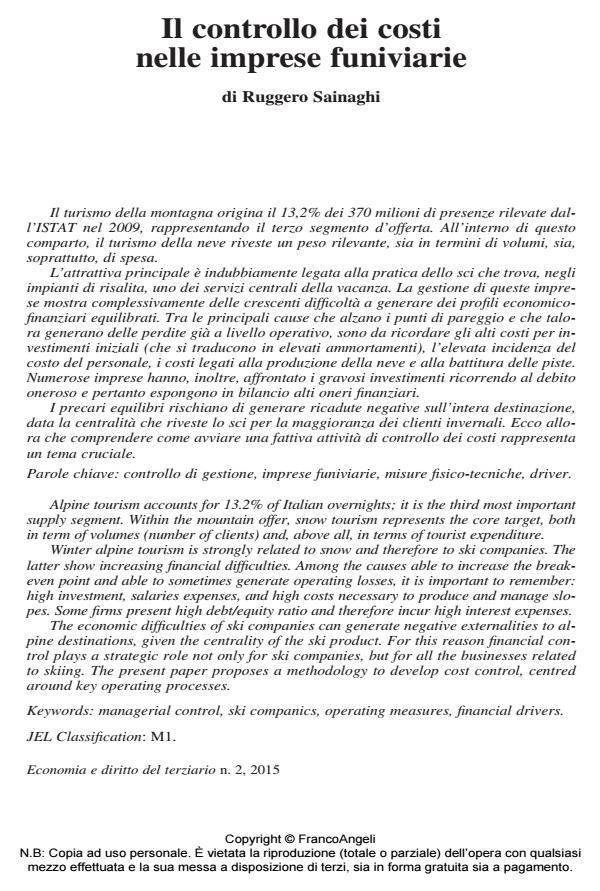Il controllo dei costi nelle imprese funiviarie
Journal title ECONOMIA E DIRITTO DEL TERZIARIO
Author/s Ruggero Sainaghi
Publishing Year 2015 Issue 2015/2
Language Italian Pages 24 P. 315-338 File size 125 KB
DOI 10.3280/ED2015-002005
DOI is like a bar code for intellectual property: to have more infomation
click here
Below, you can see the article first page
If you want to buy this article in PDF format, you can do it, following the instructions to buy download credits

FrancoAngeli is member of Publishers International Linking Association, Inc (PILA), a not-for-profit association which run the CrossRef service enabling links to and from online scholarly content.
Alpine tourism accounts for 13.2% of Italian overnights; it is the third most important supply segment. Within the mountain offer, snow tourism represents the core target, both in term of volumes (number of clients) and, above all, in terms of tourist expenditure. Winter alpine tourism is strongly related to snow and therefore to ski companies. The latter show increasing financial difficulties. Among the causes able to increase the breakeven point and able to sometimes generate operating losses, it is important to remember: high investment, salaries expenses, and high costs necessary to produce and manage slopes. Some firms present high debt/equity ratio and therefore incur high interest expenses. The economic difficulties of ski companies can generate negative externalities to alpine destinations, given the centrality of the ski product. For this reason financial control plays a strategic role not only for ski companies, but for all the businesses related to skiing. The present paper proposes a methodology to develop cost control, centred around key operating processes.
Keywords: Managerial control, ski companics, operating measures, financial drivers.
Jel codes: M1
- Seasonal work in the Italian tourism industry: a systematic literature review Fabio Gaspani, Silvia Mazzaglia, in Cambio. Rivista sulle Trasformazioni Sociali /2025 pp.17
DOI: 10.36253/cambio-16641
Ruggero Sainaghi, Il controllo dei costi nelle imprese funiviarie in "ECONOMIA E DIRITTO DEL TERZIARIO " 2/2015, pp 315-338, DOI: 10.3280/ED2015-002005